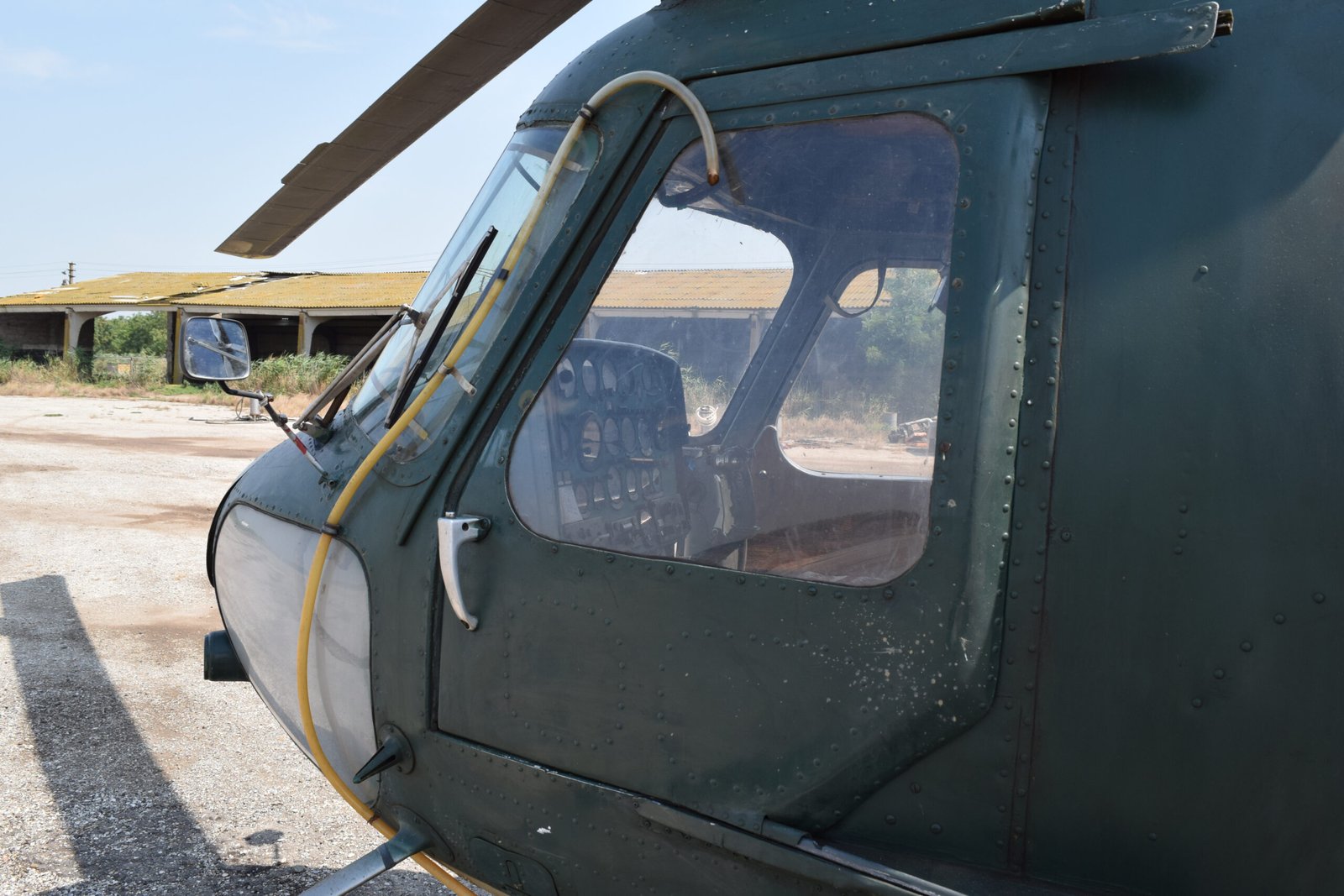Aviation Social Media
Soaring High: The Future of Aviation Technology
The aviation industry is on the cusp of a technological revolution that promises to reshape how we think about air travel. As innovation takes flight, aspiring pilots and aviation enthusiasts are presented with unprecedented opportunities for education and growth. In this post, we’ll explore different types of aviation schools, delve into essential blogs and websites, and highlight FAA-certified flight schools.
### Types of Aviation Courses
Aviation schools offer a variety of courses tailored to diverse interests within the field. Here are some key categories:
1. **Pilot Training Programs**: These courses provide foundational knowledge for aspiring pilots. They often include ground school, flight training with certified instructors, and simulator sessions that cover everything from basic maneuvers to advanced navigation techniques.
2. **Aircraft Maintenance Engineering**: For those inclined towards the technical side of flying, these programs focus on aircraft systems, troubleshooting, maintenance protocols, and safety regulations. Students gain hands-on experience working on real aircraft.

3. **Aviation Management**: This course streamlines the business side of aviation by teaching students about airport operations, airline management, regulatory compliance, and marketing strategies specific to the industry.

4. **Air Traffic Control Training**: Critical for maintaining safety in busy airspaces, these programs train students in communication skills, radar operation, and crisis management necessary for effective air traffic control.
5. **Drone Technology Courses**: With unmanned aerial vehicles gaining traction across various sectors—such as delivery services and agriculture—these courses prepare students for careers in drone piloting and operations.
### Essential Aviation Blogs & Websites
Staying informed is crucial in an ever-evolving field like aviation. Here’s a curated list of blogs and websites that avid followers should bookmark:
**Flying Magazine (flyingmag.com)**: A treasure trove for enthusiasts featuring news articles, product reviews, pilot stories, and tips for improving flying skills.
**Airline Reporter (airlinereporter.com)**: This blog offers insights into airline industry news along with personal experiences shared by passionate travelers.
**AvWeb (avweb.com)**: A leading online resource providing up-to-date information on general aviation news including product announcements and technology advancements.
**PilotWorkshops (pilotworkshops.com)**: Focused on enhancing pilot proficiency through workshops led by experienced aviators covering everything from navigation to emergency procedures.
**YouTube Channels like “FlightChops” or “Mentour Pilot”**: Engaging video content that brings flying experiences directly to your screen while offering tips from seasoned pilots.
Social media platforms also serve as valuable resources; following accounts like @AviationWeek or @FlybyWireSim can keep you informed about developments directly impacting the industry!
### FAA Flight Schools & Simulators
When it comes to obtaining your pilot’s license or advancing your skills further, FAA-certified flight schools are indispensable. These organizations meet stringent federal regulations ensuring quality training:
**ATP Flight School**: Known for its comprehensive programs focusing on Airline Transport Pilot certifications.
**Embry-Riddle Aeronautical University**: A leader in aerospace education offering degrees ranging from aeronautics to engineering.
**American Flyers**: This institution provides personalized instruction catering to both beginner pilots and professionals looking to refine their skills.
Additionally, simulators have become an integral part of pilot training programs. Advanced flight simulation technology allows trainees to practice complex scenarios safely before taking off into real skies—a critical component in ensuring safe aviators ready for any situation they may face once airborne.
In conclusion, as we soar into the future of aviation technology—with its promising educational paths and groundbreaking innovations—the sky truly is not the limit; it’s just the beginning! Whether you’re looking to fly high yourself or merely stay informed as an enthusiast, now is an exciting time to engage with all facets of this dynamic industry!
The Green Skies Ahead: Sustainable Innovations in Aviation
As the aviation industry continues to evolve, sustainability has emerged as a critical focus. With increasing awareness of environmental impacts, innovative solutions are being developed to reduce carbon footprints and promote greener practices. To navigate this transformative landscape, aspiring aviators can access various educational resources tailored to their interests and career goals.
*Aviation Schools by Types of Courses**
The journey into aviation begins with education, and there is an abundance of options available for those eager to take flight. Aviation schools offer diverse programs catering to different aspects of the field:

1. **Pilot Training Programs**: These courses focus on the technical skills needed to operate aircraft. From private pilot licenses (PPL) to commercial pilot licenses (CPL), students gain hands-on experience that prepares them for real-world flying.
2. **Air Traffic Control**: Specialized curricula teach students how to manage air traffic safely and efficiently. Graduates play a crucial role in maintaining orderly skies while ensuring flights operate smoothly.
3. **Aviation Management**: For those interested in the business side of flying, aviation management courses cover topics such as airport operations, airline marketing, and logistics—essentially everything needed for running successful aviation enterprises.
4. **Aircraft Maintenance Engineering**: This program equips students with the knowledge required to troubleshoot and repair aircraft systems. As sustainable technologies emerge, understanding new eco-friendly materials becomes increasingly vital.
5. **Unmanned Aerial Systems (UAS)**: With the rise of drones, many institutions now offer courses focused on UAV technology, regulations, and applications—a rapidly growing sector within aviation.
Exploring these varied pathways provides prospective aviators with rich opportunities aligned with their passions while contributing positively to industry sustainability.
*Lists of Aviation Blogs, Websites, Social Media Sites**
Staying informed about the latest advancements in sustainable aviation practices is essential for both professionals and enthusiasts alike. Here’s a compilation of valuable online resources:
**Aviation Week Network**: A leading source for news covering all aspects of aerospace innovation.
**FlightGlobal**: An extensive database offering insights into airlines’ efforts toward sustainability.
**The Air Current**: Focuses on news analysis related specifically to market shifts in airlines aiming for greener operations.
**Simple Flying Blog & Site**: Offers updates on current events along with expert opinions on how airlines can innovate sustainably.
**Reddit’s r/flying Community**: A vibrant forum where pilots share experiences and discuss eco-friendly practices in aviation.
Additionally, popular social media platforms like Twitter (#AvGeek) or Instagram provide a visual feast featuring stunning aircraft photos alongside discussions about sustainability trends within the community.
*FAA Flight Schools/Airplane Schools/Simulators**
For those ready to take action towards becoming licensed pilots or specialists in other areas of aviation, FAA-approved flight schools remain indispensable resources. These institutions uphold rigorous training standards that ensure safety while equipping students with crucial skills.

Many FAA flight schools offer advanced simulators that mimic real-life flying scenarios—perfecting techniques without leaving the ground! Simulators not only minimize fuel consumption but also allow trainees from diverse backgrounds unlimited opportunities for practice without environmental impact concerns.
In conclusion, as we gaze upon the horizon marked by promising green skies ahead, it’s clear that sustainable innovations are reshaping our beloved industry. By diving into educational avenues and utilizing available resources—be it blogs or reputable flight schools—we can actively participate in creating a more environmentally responsible future for aviation! So buckle up; it’s going to be an exciting ride!
The Skyline Promise: Exploring the Fascinating World of Urban Air Mobility
The horizon is shifting, and with it comes an exhilarating revolution in aviation—urban air mobility (UAM). This dynamic field blends cutting-edge technology with the promise of transforming how we navigate our cities. As we delve into this fascinating world, it’s essential to understand that the future of flight not only relies on innovative aircraft but also on a robust foundation built through aviation and technology training.

To embark on this journey, aspiring aviators must familiarize themselves with various educational avenues. Traditional flight schools have long served as pillars for pilot training, but now they are evolving alongside new technologies. The Federal Aviation Administration (FAA) has recognized the importance of adapting to these changes by accrediting numerous flight schools across the country that focus on emerging sectors like UAM. These institutions offer comprehensive programs that include hands-on experience with cutting-edge simulators and real-world flying scenarios.
Simulators play a crucial role in modern pilot training; they provide invaluable opportunities for students to hone their skills without stepping foot into an actual aircraft. With advancements in virtual reality (VR) and computer-generated environments, pilots can practice complex maneuvers or emergency protocols safely and effectively. Schools such as Embry-Riddle Aeronautical University and ATP Flight School are at the forefront, integrating technology into their curricula to produce highly skilled pilots ready for tomorrow’s challenges.
In addition to formal education, staying informed about industry trends is vital for anyone passionate about aviation and urban air mobility. Engaging with online communities can enhance your knowledge base immeasurably. There’s a wealth of resources available through blogs, websites, and social media platforms dedicated to aviation enthusiasts.
Some noteworthy blogs include:
1. **Flying Magazine** – A classic source offering insights into both recreational flying and technical advancements.
2. **Air & Space Magazine** – Delves deeper into aeronautics history while keeping readers updated on contemporary innovations.
3. **PILOT Magazine** – Focused specifically on pilots’ experiences, gear reviews, and operational tips.
For those who prefer websites over traditional blogging formats, consider visiting:
**Aviation Week Network** – Comprehensive coverage of all things aerospace including commercial aviation updates.
**AvGeekery.com** – A hub for passionate aviation geeks showcasing everything from airline news to aircraft spotting tips.
Social media platforms are also treasure troves for real-time information and community interaction within the aviation sphere:
**Instagram** boasts aerial photography accounts that showcase stunning views from above.
**Twitter** serves as a fast-paced platform where industry professionals share breaking news.
**YouTube channels like “Mentour Pilot” or “Captain Joe” provide engaging visuals coupled with informative commentary about flying.
As urban air mobility continues its ascent—the promise of personal drones zipping through cityscapes becoming more tangible—it is imperative that budding aviators embrace both traditional learning paths and modern digital landscapes.
With every new innovation comes responsibility; thus, pursuing quality education remains paramount in ensuring safety within UAM systems. Whether you’re navigating through FAA-accredited flight schools or exploring dynamic online resources—a commitment to continuous learning will prepare you for this remarkable shift in how we view transportation.
So strap in! The skyline awaits your exploration—a mesmerizing blend of technology promising a future where urban skies become just as bustling as city streets below!
Aviation Wonders: Exploring the World’s Most Extraordinary Airports
The world of aviation is an ever-evolving marvel, a tapestry interwoven with technology and human ingenuity. As we soar through the skies, our journey begins even before we board those sleek aircraft. Have you ever considered how training for such adventures unfolds? Aviation and technology training, particularly through sophisticated simulators, plays a crucial role in preparing pilots for the challenges they face. With realistic scenarios and immersive environments, these simulators allow aspiring aviators to hone their skills without leaving the ground.
But let’s not forget that the aviation community extends far beyond just pilots and planes. There exists a wealth of information available online for enthusiasts eager to learn more about this fascinating field. If you’re looking to dive deeper into aviation culture or perhaps stay updated on trends and news, consider exploring popular aviation blogs and websites like AirlineReporter, The Points Guy, or AOPA (Aircraft Owners and Pilots Association). Social media platforms are also teeming with vibrant communities; join hashtags like #aviationphotography on Instagram or follow Twitter accounts dedicated to flight updates.
For those seeking structured education in aviation, online courses abound! Ground schools offer comprehensive programs covering everything from air navigation to meteorology. Many well-respected institutions provide accredited online courses catering to different levels of expertise—whether you’re a novice pilot or someone looking to expand your knowledge base as an airline operations manager. Organizations like Embry-Riddle Aeronautical University and Purdue University Global have made significant strides in delivering quality online education tailored for future aviation leaders.
As one delves deeper into this field, career opportunities become increasingly enticing. Pilot jobs remain at the forefront of many people’s ambitions, but there are numerous paths within the industry—ranging from air traffic control positions to roles in aircraft maintenance engineering. The Federal Aviation Administration (FAA) website is a treasure trove of resources where potential pilots can find valuable links about licensing requirements, medical certifications, and ongoing career developments.
In recent years, drones have emerged as exciting players within aviation’s expanding universe. These unmanned aerial vehicles (UAVs) have revolutionized various sectors—from agriculture monitoring to search-and-rescue missions—while also sparking new discussions around regulations and safety standards. The FAA has been proactive in establishing guidelines for drone usage; it’s essential for operators to familiarize themselves with these rules if they wish to take flight responsibly.

So why should you explore these extraordinary airports worldwide? Each terminal tells its own story—a journey marked by cultural significance, architectural brilliance, or sheer operational complexity. Think of Changi Airport in Singapore with its stunning butterfly garden or Incheon International Airport’s breathtaking art installations! Airports serve as gateways not only across geographical boundaries but also into realms rich with history and adventure.
As we reflect upon the wonders of aviation—from rigorous training methods and educational resources to groundbreaking technologies like drones—we recognize that every aspect contributes profoundly to our shared experience as global travelers. So buckle up! The sky awaits your exploration!
Navigating the Skies: A Look at the Evolution of Air Travel
The story of aviation is one that soars with innovation and progress. From the Wright brothers’ first flight in 1903 to today’s high-tech jetliners, air travel has transformed dramatically over the years. Central to this evolution is the intersection of aviation and technology, particularly in areas like training, simulation, and online education.
Modern pilots no longer rely solely on traditional methods of instruction. Instead, they immerse themselves in advanced flight simulators that replicate real-world flying conditions. These state-of-the-art machines offer an unparalleled opportunity for trainees to hone their skills without ever leaving the ground. With realistic controls and immersive environments, simulators are invaluable tools for both novice pilots and seasoned professionals looking to sharpen their abilities or learn new aircraft systems.
For those passionate about aviation who want to stay informed or connect with others in the field, a plethora of resources exists online. Numerous blogs and websites cater to various aspects of aviation — from pilot training tips to industry news. Some popular blogs include “The Aviationist,” which covers military aviation stories; “Airline Pilot Life,” offering insights from professional pilots; and “Flying Magazine,” a treasure trove of advice for general aviators. Social media platforms also serve as excellent venues for networking and sharing knowledge. Twitter accounts like @AvGeekNation highlight fascinating aerial content while Facebook groups connect fellow enthusiasts across the globe.
Education is another cornerstone of modern aviation. With advancements in technology comes a rise in online courses designed specifically for aspiring aviators. Ground schools now offer flexible learning options through e-learning modules covering everything from navigation techniques to weather patterns. Institutions such as Embry-Riddle Aeronautical University and Purdue University provide comprehensive programs that can be completed remotely, making it easier than ever for individuals keen on pursuing careers as pilots or other aviation professionals.
As we delve deeper into this world, we cannot overlook the rapid proliferation of drones—unmanned aerial vehicles that have carved out their own niche within aviation. Drones are not just toys; they’re transforming industries ranging from agriculture to filmmaking by providing innovative solutions previously considered impractical or too costly. The Federal Aviation Administration (FAA) plays a crucial role here, establishing regulations that govern drone operations while ensuring safety within national airspace.
Aspiring pilots should familiarize themselves with FAA resources available online—such as their official website—which provides information on licensing requirements, safety guidelines, and updates regarding regulations affecting both manned aircraft and drones alike.
As technology continues its relentless march forward, opportunities abound within the aviation sector—from piloting commercial airlines to operating sophisticated drones or even working behind-the-scenes in maintenance roles. The demand for qualified personnel remains strong; thus job seekers equipped with proper training stand poised for success.
In summary, navigating today’s skies means embracing change through technological advancements while continuing an age-old passion for flight. By exploring diverse educational avenues—be it through simulator training or online courses—and staying connected via blogs and social media channels, anyone can embark on an exciting journey into this dynamic field where innovation meets adventure every day!





